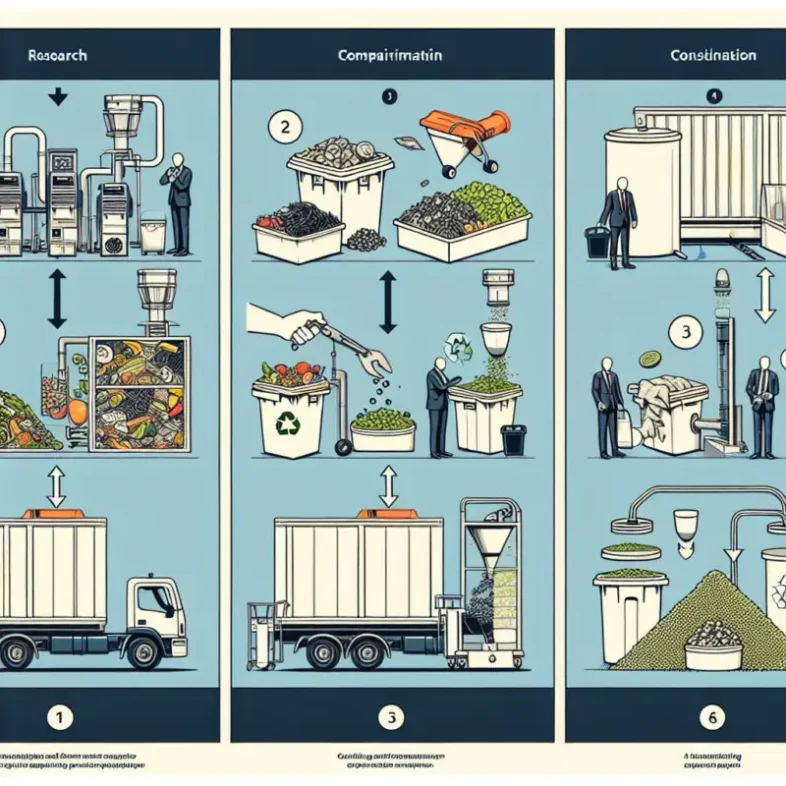Whether you own a small-scale business or a large-scale industry, waste management is a crucial factor that can significantly impact your operations and environmental footprint. One essential part of this process is dealing with food waste through depackaging and separation. As such, choosing the right food waste depackaging and separation equipment for your business is of paramount importance.
In the first stage, it's crucial to understand what depackaging and separation entail. Depackaging involves separating food from its packaging in order to reclaim the organic material for use, often recycling into compost or biofuel. Separation, on the other hand, involves sorting through mixed materials to segregate various elements according to type or quality.
Choosing the correct equipment for these processes can be guided by several key factors:
- Assess Your Waste Stream: The first step in choosing the right equipment begins with understanding your waste stream – the type and volume of waste generated by your business operations. The composition of your waste determines whether you need a simple depackager or one with additional features like metal detection or liquid extraction.
- Capacity Requirement: Consider your daily or weekly volume of food waste production when selecting equipment. It is vital to choose machinery that can handle your maximum output without becoming overloaded.
- Intended End Use of Organic Material: If you plan on using reclaimed organic material for purposes such as animal feed or composting, it will require different separation techniques compared to creating biofuel. Ensure your chosen equipment meets these specific needs.
- Automation Level: Depending on your budget and manpower, choose between manual and automated systems. Automated systems might be more expensive initially but could save labor costs in the long run.
- Ease of Maintenance: Choose equipment that is easy to clean and maintain as this will extend its lifespan and prevent downtime due to malfunctions.
- Energy Efficiency: Prioritize machines that have high energy efficiency ratings. Not only will they reduce your carbon footprint, but they'll also lower your energy costs.
- Compliance with Regulations: Ensure the equipment meets all local and national regulations regarding waste management and environmental impact.
- Vendor Support: Select vendors who offer solid after-sales service, including parts availability, technical support, and routine maintenance.
- Cost: Lastly, consider the cost of the equipment – not just the upfront cost but also operating costs over its lifespan.
You may also like to read:
In conclusion, choosing the right food waste depackaging and separation equipment for your business involves careful consideration of a variety of factors including waste stream type, capacity requirement, end-use of organic materials, automation level, ease of maintenance, energy efficiency, regulatory compliance, vendor support and cost. By considering these aspects carefully before making a decision you can ensure that you invest in equipment that will meet your needs effectively and efficiently for years to come.
In-depth Analysis: How Does Food Waste Depackaging and Separation Equipment Work?
Food waste depackaging and separation equipment plays a significant role in managing and reducing waste, particularly in the food industry. This equipment is designed to separate packaging materials from the organic contents, allowing for more efficient recycling and disposal processes. The following is an in-depth analysis of how these machines work. According to the Food […]
The Future of Recycling: The Importance of Food Waste Depackaging and Separation Equipment
The future of recycling is a topic that has garnered significant attention in recent years. As the world's population continues to grow, so does the volume of waste that we produce. This waste, if not managed properly, can have devastating effects on our environment. One area where this issue is particularly pertinent is food waste. […]
The Role of Food Waste Depackaging and Separation Equipment in Sustainable Waste Management
In recent years, the issue of waste management has become critical due to urbanization and population growth. One aspect that requires significant attention is food waste, a major contributor to overall waste production. With the growing awareness about sustainability and resource conservation, managing food waste has become crucial. In this regard, food waste depackaging and […]
Understanding the Basics of Food Waste Depackaging and Separation Equipment
Depackaging and separation equipment is a fundamental aspect of managing food waste, a growing concern worldwide due to its environmental implications. This equipment is used to separate packaging materials from organic content, ensuring that the maximum amount of waste can be recycled or converted into useful products. Food waste depackaging and separation equipment is typically […]







